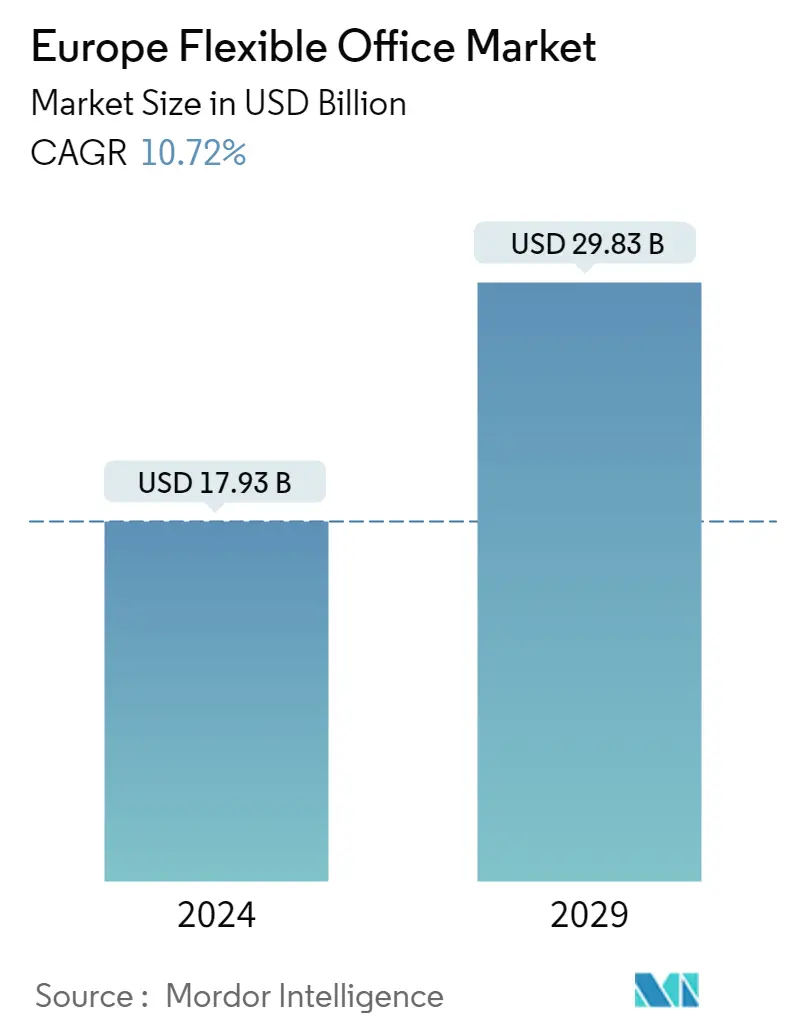Market Size of Europe Flexible Office Industry

| Study Period | 2020 - 2029 |
| Base Year For Estimation | 2023 |
| Market Size (2024) | USD 17.93 Billion |
| Market Size (2029) | USD 29.83 Billion |
| CAGR (2024 - 2029) | 10.72 % |
| Market Concentration | Low |
Major Players
*Disclaimer: Major Players sorted in no particular order |
Need a report that reflects how COVID-19 has impacted this market and its growth?
Europe Flexible Office Market Analysis
The Europe Flexible Office Market size is estimated at USD 17.93 billion in 2024, and is expected to reach USD 29.83 billion by 2029, growing at a CAGR of 10.72% during the forecast period (2024-2029).
- The increase in small and medium-sized businesses is a trend observed across all major cities of Europe, while new working practices are neither location nor sector-specific. These trends have fueled the flexible office market in Europe. Additionally, the rise in the number of startups in the region is also expected to boost the market's growth.
- The growing significance of digital systems and the need for completing knowledge-intensive tasks has transformed into a surging desire among employees to work from the office or from any desired location in an independent way.
- This has offered firms in Europe a chance to utilize their office space more proficiently, reduce the traveling hours of employees, and increase employee satisfaction, thereby boosting their work efficiency and productivity. This will help the flexible office market grow during the forecasted period.
- The flexible office market is among the sectors that are mostly exposed to the negative impact of the COVID-19 pandemic. On the one hand, the lockdown measures have forced millions of people to work from home and, on the other hand, the short-term nature of contracts have left flexible offices with very low occupancy rates across Europe. In Dublin and Stockholm, long leases and expensive rents have shifted some occupiers towards more flexible property solutions, and these factors are drivng the dynamic flexspace markets.
- Although the demand for flexible office space continues to grow, there are some obstacles standing in the way of the further adoption of this model. Commonly raised concerns include the issues of information security, confidentiality, and privacy in a more open environment. This is leading to the companies being worried about the potential impact on their marketing, especially because it could weaken their brands. But such concerns seem outweighed by the risk that companies may not have enough flexible space in their portfolios. This is due to the developments in the labor market, with many employers worrying about either keeping or attracting the most highly skilled workers.
